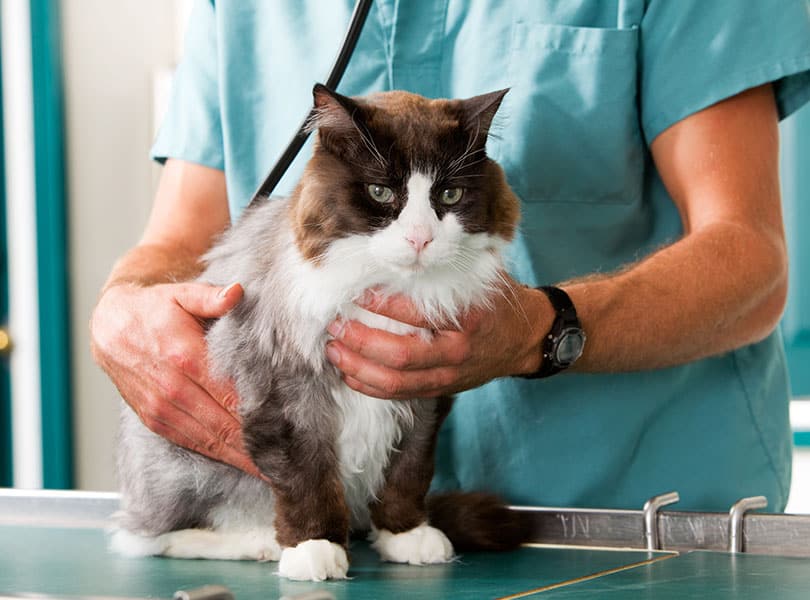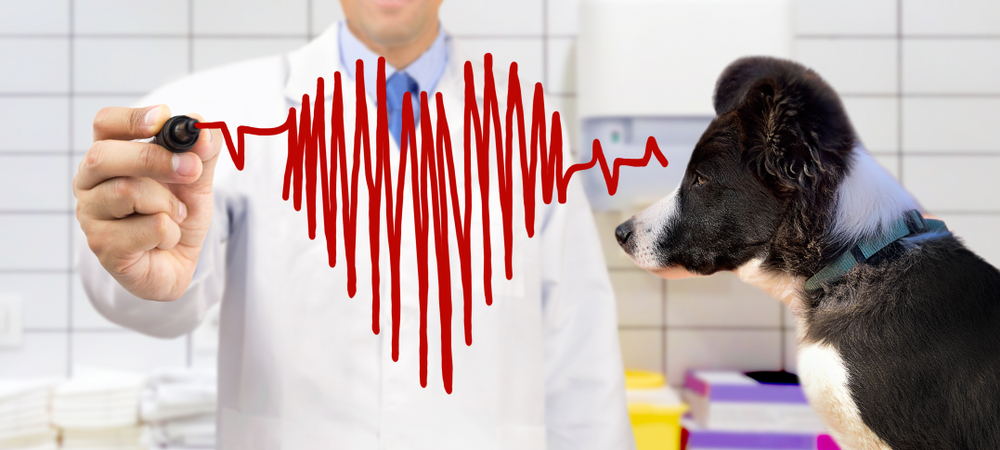The Function of Ultrasound and CT Scan in Modern Veterinary Practices: Insights From Experienced Professionals
In modern-day vet methods, ultrasound and CT scans significantly enhance diagnostic capacities. These imaging strategies supply important insights into animal wellness, assisting treatment choices. Experienced specialists acknowledge the distinct benefits of each technique. Ultrasound provides real-time assessments, while CT checks provide intricate anatomical details. Recognizing their duties and applications elevates crucial concerns about their effect on patient outcomes and the future of vet diagnostics. What insights can be gotten from their integrated use?
Comprehending Ultrasound in Veterinary Medication
Ultrasound is a crucial analysis tool in veterinary medicine, offering a non-invasive method to visualize internal frameworks. This imaging strategy uses high-frequency acoustic waves to produce real-time pictures of cells and body organs, enabling veterinarians to assess conditions without surgical treatment. Typical applications include assessing the heart, liver, kidneys, and reproductive organs, as well as checking pregnancies.The treatment is fairly quick and can be performed in numerous setups, making it an accessible alternative for vets. Unlike radiography, ultrasound offers comprehensive information concerning soft cells and blood flow, which is vital for exact diagnoses.Veterinary specialists count on ultrasound to identify abnormalities such as lumps, cysts, and liquid build-up. Its capability to direct biopsies and various other treatments additionally improves its energy in scientific practice. By using a efficient and risk-free means to examine internal composition, ultrasound has come to be a cornerstone of modern-day veterinary diagnostics.
The Advantages of CT Checks for Animal Diagnostics
CT checks offer considerable benefits in veterinary diagnostics by supplying enhanced precision in recognizing interior problems (Cancer Veterinary Near Me). As a non-invasive imaging strategy, they guarantee the security and convenience of animals during examinations. Furthermore, CT checks help with a detailed evaluation of interior frameworks, enabling a lot more reliable treatment planning
Boosted Diagnostic Accuracy
Innovations in imaging technology have substantially enhanced diagnostic precision in vet medication, particularly through using CT scans. These scans give detailed cross-sectional pictures of a pet's inner frameworks, enabling vets to determine irregularities with accuracy. The high resolution and three-dimensional abilities of CT imaging facilitate the detection of conditions such as growths, cracks, and interior blood loss that could be missed out on with traditional imaging methods. Furthermore, CT scans can help in pre-surgical preparation by supplying a comprehensive sight of physiological connections. This level of detail not only enhances the accuracy of diagnoses however likewise aids in tailoring effective treatment strategies. The combination of CT modern technology right into veterinary practices is changing the landscape of pet medical care, enhancing outcomes for clients.
Non-Invasive Imaging Technique
The introduction of non-invasive imaging techniques has reinvented pet diagnostics, with CT checks emerging as a prominent device in vet practices. These scans provide high-resolution, cross-sectional photos of an animal's interior structures, permitting veterinarians to evaluate complex problems without the need for intrusive treatments. The benefits of CT scans include their capacity to find growths, fractures, and inner bleeding with remarkable accuracy. Additionally, they promote the analysis of soft tissues and body organs, boosting diagnostic abilities. The speed of CT scanning makes it possible for quick decision-making, which is important in emergency circumstances. By minimizing tension and pain for the pet, CT scans add to a much more humane approach to diagnostics, ultimately improving therapy end results and advancing veterinary care.
Comprehensive Internal Assessment
A thorough internal analysis is necessary for exact medical diagnosis and efficient therapy in veterinary medication. CT scans deal considerable benefits hereof, supplying comprehensive cross-sectional pictures of an animal's inner frameworks. This innovative imaging technique enhances visualization of intricate anatomical areas, allowing veterinarians to determine problems such as lumps, fractures, and interior bleeding with better accuracy. On top of that, CT checks promote the analysis of problems that might be challenging to diagnose via conventional approaches. The speed and accuracy of CT imaging additionally add to prompt interventions, improving client results. As veterinary methods increasingly include CT innovation, the benefits of considerable inner evaluations end up being noticeable, enhancing the importance of this device in modern vet diagnostics.
Comparing Ultrasound and CT Imaging Techniques
While both ultrasound and CT imaging offer vital roles in veterinary diagnostics, each method provides distinct advantages and limitations that can affect professional decision-making. Ultrasound is especially valued for its real-time imaging capacities, enabling veterinarians to observe dynamic physical procedures. This method is non-invasive, mobile, and does not include ionizing radiation, making it a much safer alternative for both animals and clinicians. Ultrasound may have limitations in visualizing certain physiological frameworks or deep tissues.Conversely, CT imaging provides thorough cross-sectional sights of the body, allowing for specific localization of irregularities. It excels in examining complicated body organs and structures, particularly in the thorax and abdomen. CT scans need sedation or anesthesia in numerous cases and include exposure to ionizing radiation. Ultimately, the option in between ultrasound and CT depends on the certain medical scenario, the area of passion, and the urgency of the diagnostic demands.
Case Researches: Effective Medical Diagnoses Through Imaging
Study illustrate the significant improvements in diagnostic precision attained via sophisticated imaging technologies like ultrasound and CT scans in vet techniques. These innovations not only boost the detection of various problems yet additionally facilitate prompt and reliable treatment strategies. Assessing details situations can highlight the transformative influence of these imaging techniques on veterinary medication.
Diagnostic Precision Improvements

Imaging Innovation Advancements
As veterinary imaging innovation proceeds to progress, its influence on analysis capabilities ends up being progressively noticeable. Current situation researches highlight the successful application of advanced ultrasound and CT check techniques in recognizing complicated problems. As an example, a veterinary facility used high-resolution CT scans to detect an uncommon form of lung cancer cells in a canine, which conventional imaging had missed. An ultrasound evaluation revealed an abdominal mass in a cat, motivating timely medical treatment and a favorable result. These developments not just boost diagnostic precision however likewise allow veterinarians to design targeted treatment plans. By leveraging advanced imaging technologies, vet professionals are considerably boosting individual care, resulting in much more reliable management of various wellness problems in pets.
The Function of Imaging in Emergency Situation Veterinary Treatment
Imaging plays an essential function in emergency vet care, providing veterinarians with vital info required to make rapid, informed decisions. In urgent scenarios, techniques like ultrasound and CT scans enable experts to promptly examine a pet's internal structures, determining essential problems such as interior bleeding, cracks, or organ abnormalities. These imaging modalities enable real-time assessments, promoting prompt interventions that can be life-saving. Ultrasound is very useful for assessing soft tissue injuries and problems like fluid build-up, while CT checks deal in-depth images of complex physiological structures, crucial for detecting injury this article cases. The rate and accuracy of these imaging techniques enhance the veterinarian's capability to develop reliable therapy strategies, making sure the ideal feasible outcomes for their clients. Consequently, the integration of innovative imaging technologies right into emergency situation veterinary practices is not just advantageous yet significantly required, as it enhances diagnostic capacities and enhances total animal care during important moments.
Training and Expertise in Veterinary Imaging
Although sophisticated imaging strategies such as ultrasound and CT scans are crucial for efficient veterinary care, the successful execution of these innovations greatly depends on the training and competence of vet professionals. Competent use of imaging tools needs detailed knowledge of composition, pathology, and the principles underlying each modality. Vet professionals should go through specific training to accurately interpret imaging results, which is crucial for identifying problems and intending treatment.Certifications and proceeding education and learning in vet imaging enhance the skills of experts, enabling them to stay upgraded with technical innovations. Collaboration in between vets and radiologists frequently brings about boosted diagnostic accuracy, as professionals can supply insights right into intricate cases. Additionally, useful experience in handling imaging tools cultivates self-confidence in its application. Ultimately, the quality of vet imaging services is directly associated to the level of training and expertise possessed by the experts using these necessary analysis devices.
Future Patterns in Diagnostic Imaging for Animals
With the fast advancements in technology, vet diagnostic imaging is positioned for considerable advancement in the coming years. Emerging trends show a change in the direction of even more portable and available imaging methods, such as portable ultrasound devices, which could enhance field diagnostics. Additionally, the integration of expert system is anticipated to reinvent photo evaluation, enabling quicker and extra accurate interpretations of results.Moreover, developments in 3D imaging strategies and calculated tomography will give veterinarians with more complete views of animal composition, bring about enhanced therapy strategies. Digital reality innovation might additionally contribute in medical planning and education and learning, offering vets a special perspective on intricate cases.As telemedicine remains to grow, remote appointments promoted by diagnostic imaging will certainly end up being a lot more usual, allowing experts to assist family doctors in real-time. On the whole, these fads are set to enhance the efficiency and effectiveness of veterinary care, eventually improving pet end results.
Often Asked Concerns
Just How Much Do Ultrasound and CT Scans Price in Vet Facilities?
The costs of ultrasound and CT scans in vet clinics commonly range from $300 to $1,500, depending on elements such as location, clinic kind, and certain treatments required for the pet's diagnosis and therapy.

Are There Any Kind Of Risks Connected With Ultrasound and CT Checks for Family Pets?
Ultrasound and CT scans typically position marginal dangers to pets. However, possible problems include sedation reactions and exposure to anesthetics. CT Scans For Dogs. Veterinarians meticulously analyze each case to minimize any type of risks linked with these analysis treatments
The Length Of Time Do Ultrasound and CT Procedures Usually Take?
Ultrasound procedures normally take around half an hour to an hour, depending upon the intricacy. CT scans, being more in-depth, usually require 30 mins to 90 mins, including preparation and recuperation time for the animal.
Can All Veterinarians Perform Ultrasounds and CT Scans?
Not all vets can do ultrasounds and CT scans. Specialized training and accreditation are often needed to ensure proficiency in these innovative imaging strategies, which may restrict their availability to veterinarians with extra certifications and resources.
What Kinds Of Pets Profit Many From These Imaging Techniques?
Particular pet types, especially pets and cats, benefit substantially from ultrasound and CT scans. These imaging techniques enhance diagnostic accuracy for conditions like tumors, internal injuries, and organ abnormalities, resulting in enhanced treatment results and client care. The high resolution and three-dimensional abilities of CT imaging help with the detection of problems such as growths, cracks, and inner blood loss that could be missed out on with typical imaging methods. Case research studies show the considerable improvements in diagnostic precision attained with sophisticated imaging modern technologies like ultrasound and CT scans in vet practices. Improving analysis precision in veterinary techniques has actually been substantially assisted by improvements in imaging modern technologies such as ultrasound and CT scans. Sophisticated imaging techniques such as ultrasound and CT scans are important for effective veterinary care, the successful application of these technologies greatly depends on the training and experience of vet experts. Vet experts should undergo customized training to precisely interpret imaging outcomes, which is important for diagnosing conditions and preparing treatment.Certifications and continuing education and learning in veterinary imaging boost the skills of practitioners, allowing them to stay upgraded with technological developments.